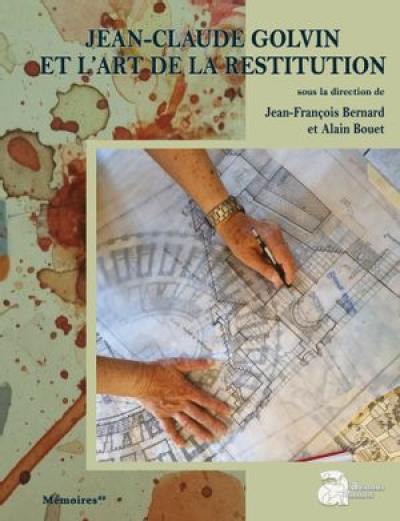
Collection(s) : Mémoires
Paru le 20/06/2023 | Relié 376 pages
Professionnels
Jean-Claude Golvin et l'art de la restitution
Directeur de recherches au CNRS, Jean-Claude Golvin a consacré sa vie à l'étude des monuments antiques. De la Tunisie à l'Egypte, puis à l'ensemble du monde méditerranéen, il a travaillé sur les sites les plus prestigieux et publié d'importants travaux scientifiques (parmi lesquels sa thèse d'état portant sur l'architecture de l'amphithéâtre romain).
Au moment d'intégrer l'Institut Ausonius, en 1993, il s'est lancé un nouveau défi en concentrant son activité sur la restitution graphique des villes disparues. Retrouvant pour l'occasion les outils traditionnels de l'architecte, il a développé sur ce thème une réflexion théorique qui a débouché sur la restitution des plus grands sites du monde antique.
Le présent volume regroupe quatorze articles, écrits entre 1993 et 2022, qui décrivent l'évolution de sa réflexion et définissent les règles dont l'application, avec toutes les réserves qu'impose une approche scientifique rigoureuse, aboutit à l'image de restitution la plus satisfaisante. Pour la première fois, la définition et le respect d'une méthode ont permis de concevoir des séries de représentations de villes antiques comparables entre elles. Chaque dessin invite à la découverte, à la transmission des savoirs et à la confrontation des approches, ainsi qu'au voyage.
Ce volume constitue également l'hommage rendu par ceux qui ont partagé un moment son parcours et l'ont connu en tant qu'enseignant, collègue ou étudiant. Par leur contribution, ils saluent le chercheur, dont l'activité frénétique de dessinateur a peut-être occulté, au cours de ces dernières années, l'importance d'une production scientifique majeure. Tout au long de sa carrière, dans le cadre d'innombrables collaborations, il n'a cessé de renouveler le regard qu'il portait sur son activité. Les quinze contributions regroupées ici illustrent, dans des domaines variés, l'apport remarquable de J.-C. Golvin à notre discipline et, au-delà de son oeuvre scientifique, la qualité du souvenir qu'il laisse à tous ceux qui ont eu le bonheur de marcher à ses côtés.
Director of research at the CNRS, Jean-Claude Golvin has devoted his life to the study of ancient monuments. From Tunisia to Egypt, then to the whole of the Mediterranean world, he worked on the most prestigious sites and published important scientific works (notably his state thesis about roman amphitheater architecture).
When he joined the Ausonius Institute in 1993, Jean-Claude Golvin set himself a new challenge by concentrating his activity on the graphic restitution of vanished towns.
Rediscovering for the occasion the traditional tools of the architect, he initiated a theoretical reflection whose resulted in the formulation of a method and the production of hundreds of plates representing the most important sites of the ancient world.
This volume brings together 14 articles, written between 1993 and 2022, which describe the evolution of J.-C. Golvin's thinking and the definition of rules whose application makes it possible to produce, with all the reservations imposed by scientific rigor, the most satisfactory image we can conceive in the current state of our knowledge. For the first time, the definition and respect of a method made it possible to produce series of reconstructions of ancient cities comparable to each other. These drawings are so many invitations to travel, to discovery, to the transmit knowledge and to confront approaches.
This volume is also the tribute paid by those who shared a moment in J.-C. Golvin's journey, who knew him as a teacher, colleague or student. By their contribution, they honour the researcher, whose frenetic activity as a draftsman has perhaps overshadowed, in recent years, the importance of a major scientific production. Throughout his career, he has never ceased to renew his activity, within the framework of countless collaborations. The 15 texts gathered here illustrate, in various fields, the importance of his contribution to our discipline and, beyond his scientific work, the meaningful memories he leaves to all those who have had the pleasure of walking by his side.